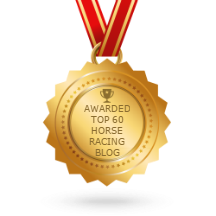The role of horses in warfare and sport
 The role of horses in warfare and sport
The role of horses in warfare and sportThe role of horses in warfare is as old as civilization itself. From the ancient steppes of Central Asia to the battlefields of the American Civil War, these magnificent animals have been indispensable to military strategy and operations.
Archaeological evidence suggests that horses were first used in warfare around 1500–3000 BC, with mounted warriors appearing around 900 BC.
This early use of horses transformed the nature of combat, providing speed, mobility, and a psychological edge over foot soldiers.
It's a transformation not unlike the one the online gaming industry has experienced with the advent of no wagering bonus promotions, offering players new ways to engage without the usual risks.
Different types of horses were utilized for various military purposes. Medium-weight horses were ideal for pulling wagons and carrying heavily armored soldiers, while lighter horses were prized for their speed and endurance.
This versatility made horses a crucial component of armies for millennia. For instance, during the American Civil War, approximately three million horses and mules accompanied the Union and Confederate armies, serving in roles ranging from cavalry mounts to artillery haulers.
Training these animals for combat was an arduous task. Horses were conditioned to withstand the chaos of battle, trained to kick, strike, and even bite on command.
Innovations such as the saddle, stirrup, and horse collar further enhanced their effectiveness, allowing for greater control and stability for the rider, and enabling the horse to carry heavier loads.
 Modern Day Saddle
Modern Day SaddleThe impact of horses on battle tactics cannot be overstated. Cavalry units could execute rapid flanking maneuvers, charge enemy lines, and pursue fleeing troops.
The psychological effect of a cavalry charge was immense, often causing panic and disarray among enemy ranks. This was evident in battles across history, from the Mongol invasions to the Napoleonic Wars.
World War I marked a turning point in the use of horses in warfare. Nearly half a million horses perished during the conflict, victims of artillery, machine guns, and harsh conditions. Despite the advent of mechanized warfare, horses continued to play vital roles in reconnaissance, supply transport, and even in the trenches.
While horses are no longer a staple of modern Western armies, they are still used in certain contexts. Armed fighters in developing countries and US Army special forces in rugged terrains have employed horses for their reliability and adaptability.
The legacy of war horses endures, a testament to their significant role in shaping military history and immortalised in films such as 'Warhorse'.
From battlefield to sport: the evolution of equestrian events
The transition of horses from military use to equestrian sports is a fascinating journey. As warfare evolved and mechanization took over, the skills and attributes honed in war horses found a new arena in sports.
Early 20th-century eventers were often real-life war horses, their training and experience on the battlefield translating seamlessly into competitive events.
The Role of Women in Equestrian Sports: Historical Context and Social and Cultural Factors
Ancient Greece and Rome:Women were enthusiastic spectators of chariot races, attending events in large numbers.
Their presence contributed to the popularity and excitement of the sport and although they were not able to participate as charioteers many wealthy women owned and bred racehorses, and some even sponsored teams.
In this way they could win prizes and accolades for their horses and teams giving them a stake in the sport and allowing them to influence its direction.
It’s also noteworthy that when the Romans invaded Britain one of the strongest and most successful opponents was the female chieftain Boudica. She was renowned for riding to war in a chariot fitted with lethal knives attached to the wheels which could scythe through a phalanx of foot soldiers.
In Medieval Europe women were involved in hunting and falconry, which were popular activities among the nobility. Riding for fun and exercise was also popular.
The 19th Century saw the rise of women's equestrian sports particularly in England and the creation of women's riding clubs and competitions.en up new opportunities for women in the sport.
Notable Women in Equestrian Sports
Isabella Bird
Adventurer and Naturalist: While primarily known for her adventurous travels and botanical studies, Isabella Bird was also a skilled horsewoman. Her journeys often involved riding through challenging terrain, showcasing her equestrian abilities and courage.
Scientific Contributions: Bird's observations and collections of plant specimens contributed significantly to the field of botany. Her equestrian skills allowed her to access remote and often dangerous locations, expanding her scientific research.
Lady Wentworth
Lady Wentworth was a prominent figure in the world of horse breeding, particularly in the development of the Arabian horse breed in England.
She established a successful breeding program at her stud farm, creating a significant impact on the Arabian horse industry.
Author and Advocate: Wentworth was also a prolific author, writing several books on horses and the equestrian lifestyle. She was a passionate advocate for animal welfare and worked to improve the conditions for horses.
Dorothy Green
Olympic Champion: Dorothy Green was a British equestrian who won a gold medal in dressage at the 1952 Summer Olympics. Her victory was a significant achievement for British equestrianism and helped to raise the profile of the sport in the country.
Legacy: Green's success inspired countless young riders and paved the way for future generations of British equestrian champions. Her legacy continues to be celebrated in the equestrian community.
These are just a few examples of notable women who have made significant contributions to the world of equestrian sports. Their achievements have helped to break down barriers, challenge stereotypes, and inspire countless others.
One notable example of the role of horses in warfare and sport
Seweryn Kulesza's horse Tóska, which won a silver medal at the 1936 Olympics before being used in World War II. This dual role of horses as both warriors and athletes highlights their versatility and enduring value.
Modern equestrian sports have evolved significantly, with disciplines such as dressage, show jumping, and eventing drawing directly from the skills developed for military purposes.
Equestrian sports today celebrate the agility, strength, and intelligence of horses, attributes that were once crucial on the battlefield.
The training methods developed for war horses have been refined and adapted for sports, ensuring that the legacy of these remarkable animals continues.
The role of horses in warfare and sport is made possible through the bond between horse and rider, forged in the crucible of combat and remains a cornerstone of modern equestrian events.
Join my followers of the Horses To Follow (12.5 pts profit in just 10 advised horses this month). You will receive by email all my horses to follow for just £5 per month.
To subscribe just click the Paypal link below

You Might Like These
Kentucky Derby Odds: Will there be a hometown favorite?
Preakness Stakes Odds: Will the champions face fresh challengers?
Belmont Stakes Odds: At 1½ miles, stamina becomes the great equalizer as longshots can threaten.
Breeders' Cup Odds: International talent collides with American speed, reshuffling expectations across the board.
Dubai World Cup Odds: Under desert lights, can a Japanese sensation prevail against the world's elite.
Pegasus Cup Odds: Retirement beckons for champions seeking one final payday at America's richest race.
Bet on Horses: Every wager tells a story of hope against mathematical probability.
Kentucky Derby Betting: Beneath fancy hats and mint juleps, fortunes change hands with each thundering hoof.
Preakness Stakes Betting: The middle jewel rewards those who recognize when Derby form holds true.
Belmont Stakes Betting: Distance separates champions from pretenders when the final furlong tests them all.
Breeders Cup Betting: Global racing converges for two days where value hides in plain sight.

Returns Policy: Once a customer has agreed to pay for a product or service no returns will be permitted or payments returned.
All PayPal transactions are subject to the PayPal Privacy Policy
Privacy Policy: Personal details provided to this site by an individual may be shared with third parties unless requested otherwise.
Above policies updated 15 March 2018



